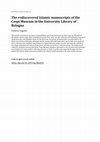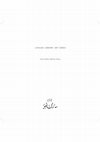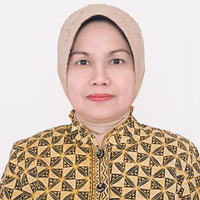Books by Federica Gigante

Explores the history of material exchanges between the Islamic world and Italy in the seventeenth... more Explores the history of material exchanges between the Islamic world and Italy in the seventeenth century
By revisiting Italian perceptions of Islamic material culture, Federica Gigante analyses the procurement networks of Islamic artefacts from the Eastern Mediterranean to Florence and Bologna in the seventeenth century. For the first time, this work reassesses the idea that Islamic objects in seventeenth-century Italy were considered as mere curiosities, sparking no cultural interest or historical quest. Its focus is Italy’s largest collection of Islamic artefacts assembled by the Medici agent and Bolognese nobleman Ferdinando Cospi in his public gallery: the Cospi Museum.
Through an extensive investigation of previously unpublished inventories, letters and archival documents, the objects are followed through the various paths which took them from the eastern shores of the Mediterranean, through North African cities, to Livorno, Florence and, finally, Bologna. These reveal the presence of a network of enslaved Turks, Arab scholars, Egyptian fishermen and Armenian merchants, all responsible for importing both the items and their stories, biographies and anecdotes, to Italy. Gigante brings forward to the seventeenth century a phenomenon of cultural inquisition that was thought to start only a century later.
Papers by Federica Gigante

Journal of the History of Collections, 2022
This article reconstructs, by means of unpublished and newly discovered archival sources, the pat... more This article reconstructs, by means of unpublished and newly discovered archival sources, the path of the Islamic manuscripts of the Cospi Museum from their entry into the collection of Ferdinando Cospi up to the present day, and identifies them, for the first time, in a group of manuscripts currently held in the University Library of Bologna. Although Islamic manuscripts had made their way to Italy since medieval times and numerous examples may be found in Italian libraries today, very few represent the collection of a single individual and, among these, fewer still have survived as a coherent group. The rediscovered collection of Islamic manuscripts of the Cospi Museum therefore represents a rare survival which provides new insights into early modern collecting practices in Italy, as well as new material through which to explore the history of the interaction between the Islamic world and Italy in the early modern period.
Art, Mobility, and Exchange in Early Modern Tuscany and Eurasia, 2020
This essay examines the circulation of Islamic artworks at and beyond the Medici court in the sev... more This essay examines the circulation of Islamic artworks at and beyond the Medici court in the seventeenth century. It will focus in particular on the types of artefact that were imported from the Islamic world, the routes that they took to reach Italy as well as the trading mechanisms that brought them to Italy. The paucity of surviving Islamic artefacts from the Medici collections and the related dearth of documentation of their provenance have thus far precluded scholarly exploration of this aspect of the Medici's seafaring activities, in particular as regards the seventeenth century. This essay overcomes these obstacles by focusing not on the Medici collection proper but on its offshoot: the Cospi Collection.
Constantinople as Center and Crossroad, ed. Olof Heilo and Ingela Nilsson, 2019

The Mercantile Effect. Art and Exchange in the Islamicate World during the 17th and 18th Centuries, 2017
This essay analyses the influence exerted by mercantile practices on the perception of Islamic ar... more This essay analyses the influence exerted by mercantile practices on the perception of Islamic artefacts in seventeenth- century Italy. It demonstrates that merchants importing collectibles directly from the Islamic world to Italy also brought information concerning the objects themselves, their cultural backgrounds and the peoples from whom they originated. At the same time, it establishes that the acquisition of Islamic collectibles outside these Mediterranean trading networks severed the link between the objects and their origins, thus preventing any knowledge of the objects’ cultural contexts reaching the Italian collector. Mediterranean mercantile networks therefore emerge as the primary actor in the processes which shaped the perception of Islamic artefacts in seventeenth-century Italy.
Exhibitions by Federica Gigante
Developed in collaboration with Oxford’s world-renowned Mathematical Institute, this exhibition i... more Developed in collaboration with Oxford’s world-renowned Mathematical Institute, this exhibition invited visitors to explore what it means to move in one, two, three and more dimensions. Using stunning Islamic ceramics, prehistoric carvings and Renaissance prints alongside virtual reality technology, we embarked on a journey of discovery from ancient cultures into cutting-edge science.
Starting from the single point of zero dimensions to the infinite dimensions of theoretical mathematics, the exhibition explored what it means to experience and represent the patterns and spaces of our complex three-dimensional world.
PhD Thesis by Federica Gigante
PhD Thesis, 2017
This thesis explores the importation, trading, and collection of Islamic art in Italy, focusing i... more This thesis explores the importation, trading, and collection of Islamic art in Italy, focusing in particular on the Bologna collection of Islamic art mainly assembled in the seventeenth century by Ferdinando Cospi (1606-1686). The Bolognese nobleman Ferdinando Cospi was brought up and founded his collection at the Medici court in Florence, and his museum was to flourish with the ongoing patronage of the Medici during Cospi’s adult years in Bologna. The thesis presents a reconstruction of the provenance of the collection of Islamic art of Bologna, in particular at the Museo Civico Medievale and the Biblioteca Universitaria, spanning from the sixteenth to the twentieth century. It provides a catalogue of the objects as well as a transcription of the archival documents outlining the paths the objects followed in order to reach Bologna.










Uploads
Books by Federica Gigante
By revisiting Italian perceptions of Islamic material culture, Federica Gigante analyses the procurement networks of Islamic artefacts from the Eastern Mediterranean to Florence and Bologna in the seventeenth century. For the first time, this work reassesses the idea that Islamic objects in seventeenth-century Italy were considered as mere curiosities, sparking no cultural interest or historical quest. Its focus is Italy’s largest collection of Islamic artefacts assembled by the Medici agent and Bolognese nobleman Ferdinando Cospi in his public gallery: the Cospi Museum.
Through an extensive investigation of previously unpublished inventories, letters and archival documents, the objects are followed through the various paths which took them from the eastern shores of the Mediterranean, through North African cities, to Livorno, Florence and, finally, Bologna. These reveal the presence of a network of enslaved Turks, Arab scholars, Egyptian fishermen and Armenian merchants, all responsible for importing both the items and their stories, biographies and anecdotes, to Italy. Gigante brings forward to the seventeenth century a phenomenon of cultural inquisition that was thought to start only a century later.
Papers by Federica Gigante
Exhibitions by Federica Gigante
Starting from the single point of zero dimensions to the infinite dimensions of theoretical mathematics, the exhibition explored what it means to experience and represent the patterns and spaces of our complex three-dimensional world.
PhD Thesis by Federica Gigante
By revisiting Italian perceptions of Islamic material culture, Federica Gigante analyses the procurement networks of Islamic artefacts from the Eastern Mediterranean to Florence and Bologna in the seventeenth century. For the first time, this work reassesses the idea that Islamic objects in seventeenth-century Italy were considered as mere curiosities, sparking no cultural interest or historical quest. Its focus is Italy’s largest collection of Islamic artefacts assembled by the Medici agent and Bolognese nobleman Ferdinando Cospi in his public gallery: the Cospi Museum.
Through an extensive investigation of previously unpublished inventories, letters and archival documents, the objects are followed through the various paths which took them from the eastern shores of the Mediterranean, through North African cities, to Livorno, Florence and, finally, Bologna. These reveal the presence of a network of enslaved Turks, Arab scholars, Egyptian fishermen and Armenian merchants, all responsible for importing both the items and their stories, biographies and anecdotes, to Italy. Gigante brings forward to the seventeenth century a phenomenon of cultural inquisition that was thought to start only a century later.
Starting from the single point of zero dimensions to the infinite dimensions of theoretical mathematics, the exhibition explored what it means to experience and represent the patterns and spaces of our complex three-dimensional world.